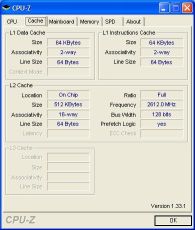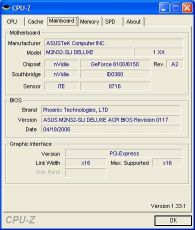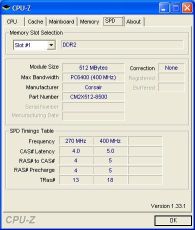| AMD AM2 5000+ |

|
|
Socket AM2 Specifications
Socket AM2 was the next logical step for AMD and brings with it support for DDR2 as its most prominent feature difference. Other features include:
- DDR2 support (up to 667MHz all chips) / (up to 800MHz for X2 and FX)
- Reduced power consumption including new Energy Efficient models
- AMD Virtualization support (hardware virtualization in-chip)
- Redesigned 4-bolt heatsink tray for better stability
- Keyed ZIFF socket to ensure only correct AM2 processor can be installed
Energy Efficient models available at 65 Watts max power:
| AMD Athlon 64 X2 processors: | 4800+, 4600+, 4400+, 4200+, 4000+, and 3800+ |
Energy Efficient models available at 35 Watts max power:
| AMD Athlon 64 X2 processor: | 3800+ |
| AMD Athlon 64 processor: | 3500+ |
| AMD Sempron processors: | 3400+, 3200+, and 3000+ |
NOTE: the third digit of a desktop processor’s OPN details the maximum power consumption of that model
A
denotesnormal
powerO
denotes a 65 watt energy efficient processorD
denotes a 35 watt energy efficient, small form factor processor
As you can see the new AM2 brings with it DDR2 support and should yield much higher memory bandwidth and should that will beat down even the highest rated currently available Intel chips in this category.
The newly redesigned 4 bolt heatsink tray poses more of a problem than offering a feature. While the tray will offer better stability it also means that cooling solutions (especially those utilized by water cooling and phase change) may not work with this design. The cooling solution included by AMD for our testing purposes was an AVC Heatsink (Part # Z7U7414002) and is particularly noisy. The socket retention mechanism goes back to the two clip design and may or may not work with heatsinks designed to use this kind of hold down.
As AMD has done in the past, they once again have lowered the thermal rating of their processors and currently offer the AM2 in three categories. 89Watts, 65Watts, and 35Watts. Expect to pay a premium for the energy efficient models of your selection. These models should have quite good overclocking results if we take into account past performance of these type parts.
Specifications for AM2 include:
| Manufactured: | Fab 30 in Dresden, Germany |
| Process Technology: | 90-nanometer DSL SOI (silicon-on-insulator) technology |
| Packaging: | Socket AM2 (940-pin organic micro PGA) |
| HyperTransport technology: | Supports single HT link - up to 8.0 GB/sec per link bandwidth |
| Memory: | DDR2 memory controller |
| Effective data bandwidth: | Up to 12.8 GB/sec dual channel memory bandwidth |
| Total CPU bandwidth: | Up to 20.8 GB/sec (HyperTransport + Memory bandwidth) |
| Memory Speed - FX and X2: | DDR 2 memory up to and including PC2 6400 (DDR2-800) unbuffered |
| Memory Speed - A64 and Semp: | DDR 2 memory up to and including PC2 5300 (DDR2-667) unbuffered |
| Common Features Added: | AMD Virtualization technology |
| Chipsets: | ATI, NVIDIA, SiS and VIA |
| Motherboard Support: | Support expected from all major vendors - ASUS, MSI, Gigabyte, Biostar, Shuttle, ECS, Leadtek, Abit, EPox |
What has changed here from the past X2 lineup all relates to the memory controller, bandwidth, and supported ram. Additionally you can see AMD has added AMD Virtualization technology. We will discuss this later in the article.
Techwarelabs has confirmation from all major chipset providers that they will and do offer support for the new AM2 platform. Our test bed even recognized the processor and type of processor correctly. A huge kudo’s to both the motherboard manufacturer ASUS and AMD.
Here are some screenshots that may help clarify settings and parameters:
Let's fire up the 5000+ and see what she can do.
| « AM2 5000 | Benchmarks » |








